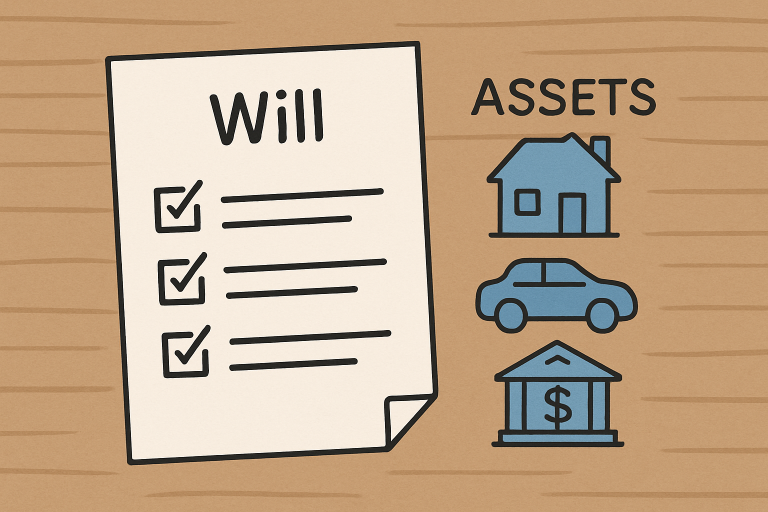What Happens After Someone Dies: Probate Process Explained
Key Takeaways
- Probate is the legal process of administering a deceased persons estate.
- This process validates the will, pays off debts, and distributes assets to heirs.
- Certain assets with designated beneficiaries or joint ownership bypass probate.
- Effective planning with legal experts can simplify or circumvent probate entirely.

Table of Contents
- Understanding Probate
- Steps in the Probate Process
- Assets That Avoid Probate
- Common Challenges in Probate
- Strategies to Simplify Probate
- Conclusion
When a loved one passes away, the aftermath often brings not just grief but also a cascade of administrative and legal responsibilities. One of the most crucial processes families encounter is probate, the formal legal method for settling the deceaseds estate. For anyone stepping into the role of executor or trying to understand what comes next, knowing what probate involves can make a difficult time a little less overwhelming. For those facing probate in Colorado, connecting with experienced Colorado probate lawyers can be instrumental in navigating this intricate process.
Probate addresses everything from confirming the wills validity to paying outstanding debts and distributing assets to beneficiaries. Yet, not every asset or family will be subject to the same process. Some estates may be straightforward, while others are more complex, often depending on state laws and the size of the estate. A well informed approach to probate enables families to focus on healing rather than lingering financial disputes.
Many people are surprised to learn that not all assets must go through probate; some can pass directly to heirs. Careful estate planning, such as establishing trusts or keeping beneficiary designations up to date, can streamline or even avoid probate altogether. Ultimately, understanding these distinctions and the whole probate journey is vital for honoring a loved ones wishes and protecting family interests.
This article will outline the probate process, highlight assets that avoid probate, discuss common challenges, and provide estate planning strategies to help simplify the process. By being proactive, families can significantly reduce stress and complications during an already emotional time.
Understanding Probate
Probate is a court supervised procedure designed to ensure that a deceased individuals assets are distributed according to their will or, if there is no will, according to state laws. This process typically involves:
- Verifying the authenticity of the will.
- Appointing an executor or estate administrator.
- Paying outstanding debts and taxes.
- Distributing the remaining assets to the rightful heirs and beneficiaries.
The complexity and timeframe for probate can vary widely based on the estates value, the clarity of the will, and local state regulations. Some smaller estates may qualify for simplified processes, while larger or contested estates can take months or even years to resolve.
Steps in the Probate Process
- Filing a Petition: The probate journey begins when the executor or potential administrator files a petition in the appropriate probate court, officially opening the estate.
- Notifying Heirs and Creditors: All interested parties such as family, other beneficiaries, and creditors must be notified about the proceedings so they can present claims or contests if necessary.
- Inventorying Assets: The executor must locate and list all of the deceaseds assets, including real estate, bank accounts, and personal property, and assess their value.
- Paying Debts and Taxes: Before anything is inherited, the estate must pay off debts, final bills, and any taxes due. This ensures creditors are satisfied before any distributions occur.
- Distributing Remaining Assets: Once debts and taxes are settled, the executor distributes the remaining property as directed in the will, or, if there is no will, by state intestacy laws.
Assets That Avoid Probate
Not every asset forms part of the probate process. Some types of property transfer automatically upon death, making probate unnecessary for those items. Common examples include:
- Jointly Owned Property: Assets held jointly such as real estate titled joint tenants with right of survivorship pass automatically to the surviving owner upon one owners death.
- Payable on Death Accounts: Financial accounts with payable on death (POD) or transfer on death (TOD) designations transfer directly to named beneficiaries.
- Life Insurance Policies: If theres a designated beneficiary, proceeds are paid directly without court involvement.
- Assets Held in Trust: Property titled to a trust is distributed by a successor trustee as specified in the trust documents, entirely skipping probate court.
Understanding which assets can be structured this way is vital for minimizing the burdens of probate and ensuring faster access for loved ones. AARPs probate resources are particularly helpful for more information.
Common Challenges in Probate
Despite best efforts, several complications can arise during probate:
- Contested Wills: Disputes over the legitimacy or interpretation of the will may result in court litigation sometimes lasting years.
- Unknown Debts: Creditors may emerge with legitimate claims that must be settled before distributions, delaying closure.
- Asset Location: Executors may face difficulties locating all assets, especially if records are scattered or outdated.
- Tax Issues: Estate or inheritance taxes, particularly for high value estates, add another layer of complexity and paperwork.
Strategies to Simplify Probate
Many families can minimize their probate burden through advance legal planning. Consider these approaches:
- Create a Living Trust: Placing assets in a revocable living trust moves ownership out of the individuals name, allowing the successor trustee to distribute assets according to the trust without court intervention.
- Update Beneficiaries: Regularly review and update beneficiary designations on accounts, retirement plans, and insurance policies to ensure they reflect your wishes and bypass probate.
- Joint Ownership: Titling property and assets as joint ownership such as joint tenancy or tenancy by the entirety provides a smooth transition to the coowner.
- Work with Professionals: Consulting legal and financial professionals ensures plans stay current with laws and family structures, reducing the risk of court challenges or missed assets.
Conclusion
Navigating probate can be an emotional and confusing experience, but its also essential to managing a loved ones legacy. By understanding probate, planning thoughtfully, and taking advantage of legal tools, families can ensure that wishes are respected and stress is minimized. Preparation and the proper guidance can turn a potentially stressful transition into a more orderly, efficient process providing peace of mind for everyone involved.




